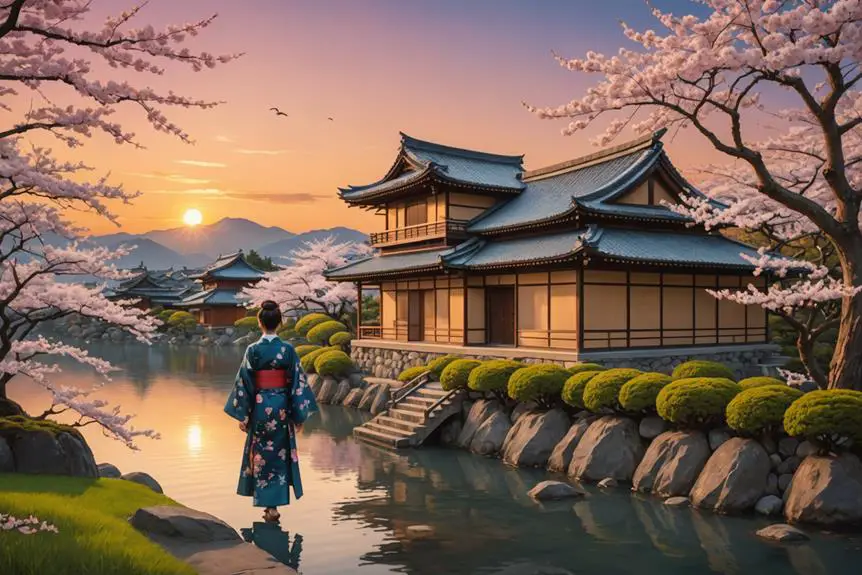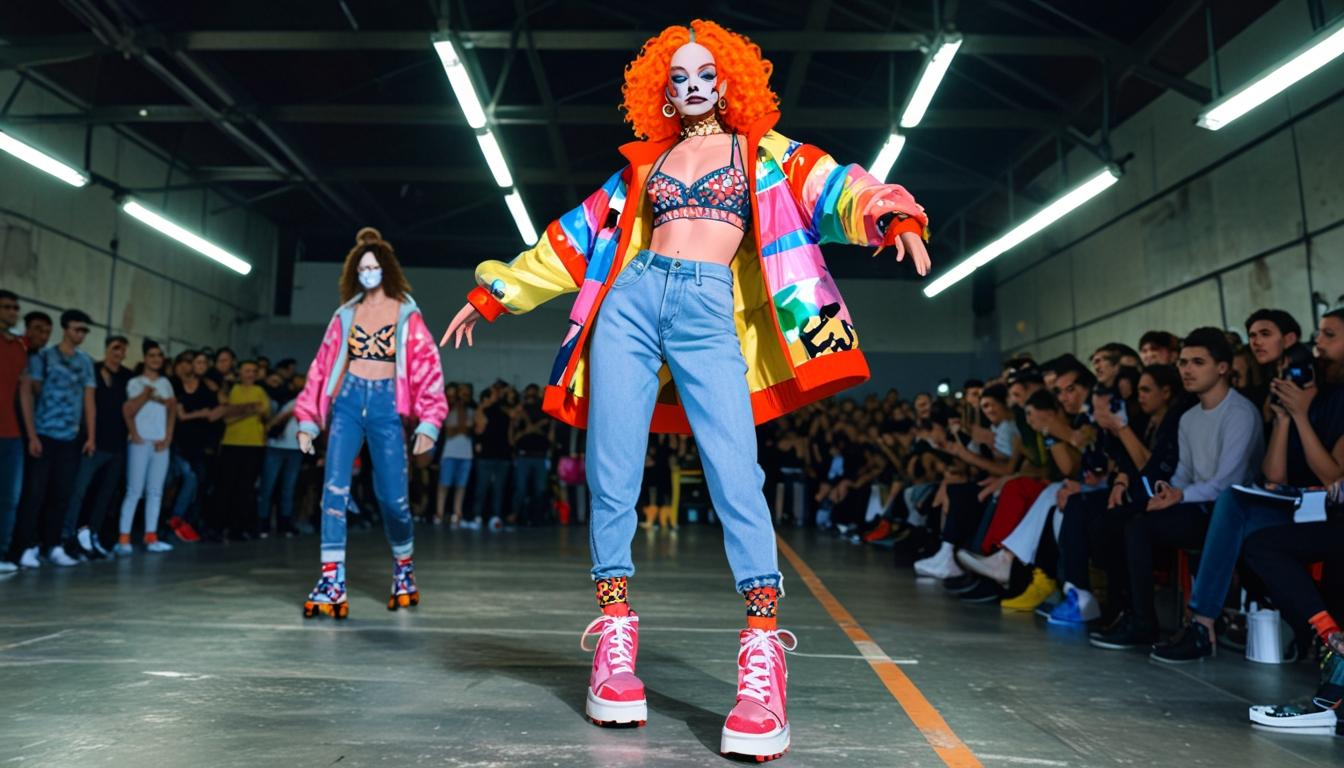When you explore the history of kimonos, you uncover a tapestry woven with cultural significance and evolving styles. Originating in the Heian period, these garments reflected not just fashion but also social status, especially during the Edo period when design became a unifying element across classes. As you trace their journey into the modern era, you notice how kimonos adapt while still honoring tradition. Yet, the story doesn't end there; the interplay between modernity and heritage invites a closer examination of how kimonos continue to shape identity today. What might that reveal?
Evolution of the Kimono
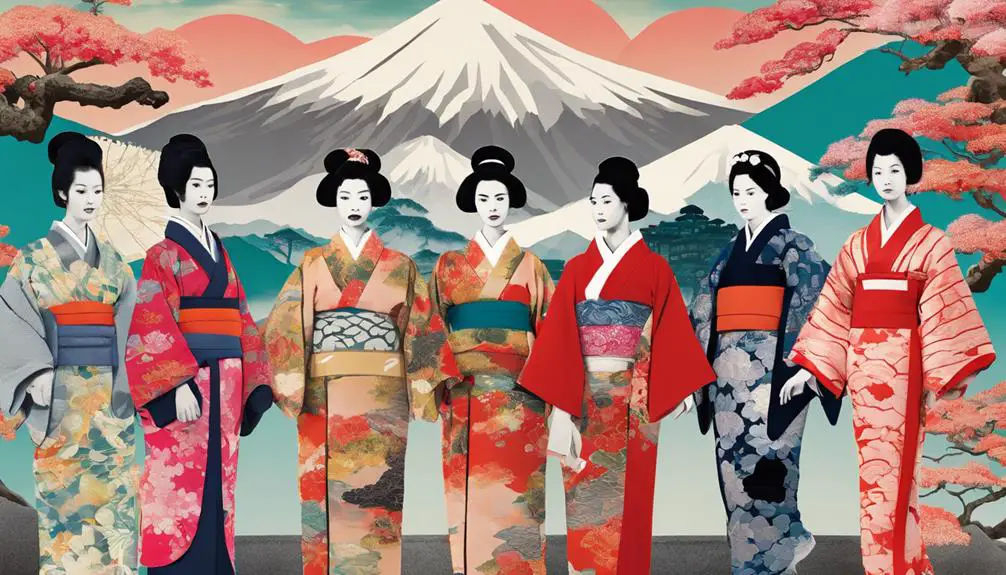
The kimono's evolution reflects Japan's changing culture and society over centuries. Originating in the Heian period (794-1192), this versatile garment was designed with straight-line cuts, allowing it to adapt to various body shapes while showcasing the beauty of traditional Japanese culture. Fast forward to the Edo period (1603-1868), and you'll find the emergence of the kosode, a shorter-sleeved kimono that unified people across all social classes. This period marked a significant cultural development, as the kosode became a symbol of identity and status, reflecting the intricate social structure of Japan.
As the Meiji period (1868-1912) rolled in, the term "kimono" gained prominence, signaling a shift in how this clothing was perceived. Western influences began to permeate Japanese fashion, leading to the adaptation of the kimono's design and construction. Motifs and colors started to convey social status more distinctly, often influenced by regulations and the era's aesthetic preferences.
Today, modern kimonos have evolved to incorporate easier-care fabrics and contemporary styles while still playing an essential role in traditional ceremonies. Even with these changes, kimonos continue to symbolize the rich heritage of Japan, bridging the past and present. Whether you're attending a festival or a formal event, wearing a kimono connects you to centuries of tradition and the ever-evolving narrative of Japanese culture.
Cultural Significance in Edo Period
Amid the vibrant cultural landscape of the Edo period, kimonos emerged as powerful symbols of identity, uniting various social classes through their distinctive designs. During this time, wearing kimono became an integral part of daily life, reflecting not only personal style but also the broader societal framework. The design and motifs of each kimono conveyed essential messages about the wearer's social status and gender, often dictated by strict sumptuary regulations that governed attire.
Floral patterns and specific color choices in kimono designs held deep cultural significance, symbolizing various traits and societal roles. For upper-class women, the elegance of their kimonos often showcased artistic sophistication, as these garments were frequently enhanced through collaborations with ukiyo-e artists. The intricate designs didn't just serve an aesthetic purpose; they were a narrative of identity, capturing the essence of the wearer's position within the complex social hierarchy of the Edo period.
As you explore the rich tapestry of kimonos from this era, you'll find that they were much more than mere clothing. They represented a collective Japanese identity, setting the nation apart from foreigners who lacked equivalent garments. The cultural significance of kimonos during the Edo period is undeniable, as they wove together threads of artistry, identity, and social structure, creating a legacy that continues to resonate in contemporary Japan.
Symbolism and Aesthetics
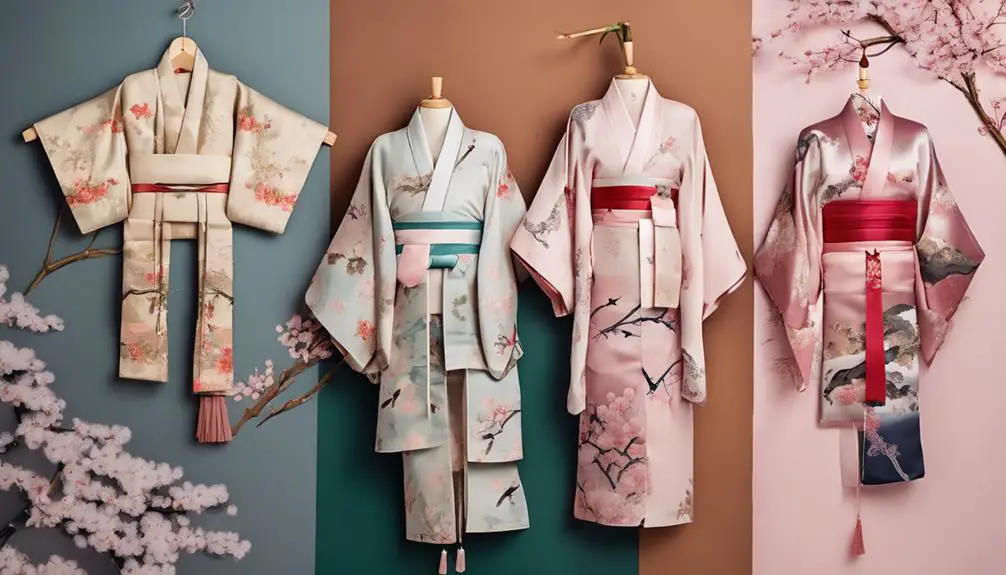
Within the intricate world of kimonos, symbolism and aesthetics intertwine to convey profound messages about the wearer's identity. Each kimono's design is a tapestry of style, motifs, fabric, and color, showcasing not just personal taste but also social status, gender, and even individual virtues. For instance, floral patterns, such as cherry blossoms, and natural motifs like cranes, aren't just beautiful; they symbolize specific traits and reflect cultural values, celebrating seasonal changes and the beauty of nature.
Colors play an essential role, too. Red, for example, embodies youthful glamour, while other hues carry their own metaphorical meanings. Historically, sumptuary regulations influenced these aesthetics, dictating which colors and patterns were acceptable for different social classes and occasions. So, when you don a kimono, you're not just wearing a piece of clothing; you're donning a rich history.
The use of kanji and classical scenes in designs reflects the wearer's cultural knowledge and artistic sophistication, serving as a canvas for storytelling and societal norms. Additionally, the kimono-making technique itself, guided by hinagata bon, or design books, showcases artistic collaboration and preserves evolving aesthetics and values within Japanese culture. Each stitch and pattern is a proof of the artistry and craftsmanship that have shaped the kimono into a profound emblem of identity, making it a enchanting subject for anyone interested in culture and fashion.
Art and Literature Connection
Kimonos aren't just a fashion statement; they're a canvas where art and literature converge, reflecting the cultural richness of their time. The intricate designs of kosode garments during the Edo period showcase an artistic sophistication that intertwines with classical literature, making each piece a narrative in itself. You'll often find beautiful motifs and scenes from famous Japanese tales adorning these garments, bringing stories to life in vibrant color and texture.
Many kimono designs feature kanji characters, which reveal the wearer's cultural knowledge and education. This integration of text and textile not only elevates the art of kimono design but also signifies the values of the society that produced them. Collaboration with ukiyo-e artists further enriched these designs, merging visual art with textile craftsmanship to create stunning works that resonate with history.
Hinagata bon, or design books, played an essential role in this creative process. They detailed patterns and motifs that carried societal values, serving as vital resources for artisans. Through their intricate designs and symbolism, kosode garments act as historical records, revealing artistic trends and cultural norms of pre-modern Japan. Each kimono is not merely fabric; it embodies a story, a lesson, and a reflection of the time's artistic spirit. By wearing or studying kimonos, you engage with a living history that celebrates the beauty of art and literature in Japanese culture.
Modern Relevance and Continuity
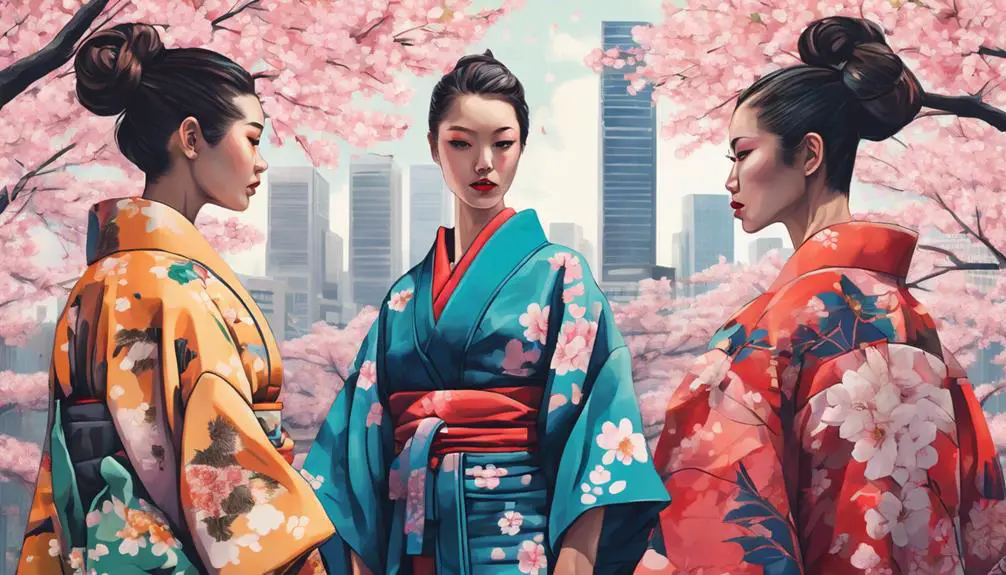
Throughout Japan's journey of modernization, the kimono has remained an essential link to the nation's cultural heritage, symbolizing continuity in the face of rapid change. As Japan embraced Western clothing during the Meiji period, the kimono evolved into a powerful symbol of traditional identity. While many men shifted to Western styles, women continued to wear kimonos for formal occasions, reinforcing a deep connection to their roots.
Today, the kimono is still proudly worn during traditional ceremonies, including weddings, tea ceremonies, and festivals, ensuring its relevance in contemporary Japanese culture. You might find that the popularity of the yukata, a casual summer kimono, has surged among younger generations, especially at vibrant summer festivals. This trend reflects a modern appreciation for traditional attire, blending the old with the new.
Local governments, particularly Kyoto, are taking significant steps to preserve this cultural heritage. Their initiative to register Kimono Culture as a UNESCO intangible cultural heritage showcases a commitment to maintaining the kimono's legacy. By recognizing its importance, they invite you to explore the rich history and artistry behind these garments.
As you observe the elegant folds and intricate designs, you can appreciate how the kimono serves as a living representation of Japan's past while remaining relevant in today's fast-paced world. Whether worn during personal milestones or festive gatherings, the kimono continues to celebrate Japan's unique cultural identity, ensuring that tradition thrives alongside modernity.
Frequently Asked Questions
What Is the History Behind Kimonos?
Kimonos reflect a rich history, showcasing traditional craftsmanship and diverse textile techniques. Their cultural significance evolves with seasonal variations, regional styles, and modern adaptations, embodying ceremonial purposes while embracing global appreciation and fashion influences.
What Do Kimonos Symbolize?
Like a canvas, kimonos symbolize cultural significance with their intricate patterns and colors, reflecting fashion evolution and gender representation. They serve as ceremonial attire, showcasing art influence and seasonal variations, impacting global textile materials and modern adaptations.
Why Do Kimonos Have so Many Layers?
Kimonos have many layers due to layering techniques that adapt to seasonal variations. Fabric choices enhance cultural significance, while ceremonial purposes reflect regional styles. Historical evolution and fashion trends influenced layering aesthetics and required careful maintenance practices.
Why Is Kimono Right Over Left?
Imagine dressing for a wedding; you wrap your kimono left over right, honoring cultural significance and gender differences. This orientation reflects historical evolution, while modern adaptations maintain dressing rituals, contrasting funeral attire with festive occasions.
